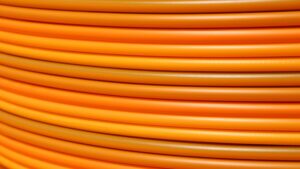14/02/2024
A recent Judgment, Emotional Perception AI Ltd v Comptroller-General of Patents, Designs and Trade Marks [2023] EWHC 2948, in relation to an appeal against a decision of the United Kingdom Intellectual Property Office (UKIPO) has paved the way for the UKIPO to (at least temporarily) adjust its approach to dealing with patent applications that relate to artificial neural networks (ANNs).
As a result of the Judgment, the UKIPO has confirmed a change in their approach to examining patent applications that relate to ANNs by updating the UKIPO’s Manual of Patent Practice to state that:
“Following the Emotional Perception judgment, examiners should not use the program for a computer exclusion to object to inventions involving ANNs”.
Some background information and discussion on the Judgment can be found in a previous Reddie & Grose article.
The outcome of the UKIPO’s appeal could potentially set the scene for a renewed approach to assessing the patentability of software inventions (and not just ANNs) in the UK or revert to the same approach as applied prior to the Judgment.
The UKIPO Appeal
The UKIPO is appealing the Judgment and has published its Grounds of Appeal.
The Grounds of Appeal provide some insight into the UKIPO’s reaction to the Judgment. Each ground is discussed below.
“Ground 1: the Judge erred in holding that the exclusion from patent protection for “a program for a computer … as such” was not engaged”.
Under Ground 1, the UKIPO supported the observation that an ANN may take the form of a dedicated hardware unit or be implemented by running software on a general purpose processor. The second type of ANN involving running software is the main subject of the Judgment and shall now be referred to as an ‘emulated’ ANN.
However, the UKIPO considers that “it is inappropriate to make a distinction between embodiments of the same (claimed) invention carried out in hardware or software, as what is decisive is whether a technical contribution is revealed”. The UKIPO argues that the Judge erred in applying this principle. In particular, “[i]n the circumstances in which a claim is directed to a computer-implemented invention that includes an ANN, the invention being implemented in hardware or software (or a combination thereof), the Judge should have held that the claims were directed to “a program for a computer … as such”, the exclusion was engaged, and the question of technical contribution should be asked”.
It is notable that the UKIPO argues that the Judge was wrong to state that “it is strictly speaking unnecessary to consider the question of technical contribution which would arise if there were a claim which could be said to be a claim to a computer program”.
The concept of using the technical contribution approach to determine whether the computer program exclusion is engaged is well established under UK law via Aerotel/Macrossan. The technical contribution approach applied in the UK has at least some foundation in a European Patent Office (EPO) decision, Vicom. However, the UKIPO and the EPO have different approaches to assessing excluded subject matter, even though the two approaches have foundations in the same case law.
The point is also made that “the Judge was wrong to find that the ANN can be ‘decoupled’ from the computer software emulating the ANN… and was therefore wrong to construe the claim as going beyond a computer program”. A key statement made in the Judgment was that “as a matter of construction the claim is not to a computer program at all”, thereby signalling a significant difference in opinion between the Judgment and the UKIPO. In contrast to the Judgment, the UKIPO considers that a ‘decoupled’ ANN should be excluded as a mathematical method.
“Ground 2: the Judge was wrong to rely on the Applicant’s ‘concession’”.
The Judgment highlighted a distinction between how the patentability exclusions apply to hardware and software implemented ANNs. For a hardware implemented ANN in the case that dedicated electronic circuitry implements the functionality of the ANN, the UKIPO acknowledges that the computer program exclusion does not apply. This is because a claim to a dedicated hardware-implemented ANN does not require a computer program (in the limited sense of a ‘software’) to operate. However, the UKIPO is of the view that an emulated ANN is a computer program, and therefore excluded from patentability.
An interesting question is raised as to why a hardware implemented ANN-based invention is not excluded from patentability, but if that same invention is in the form of an emulated ANN, it would be excluded from patentability. This issue is discussed at length in the Judgment.
It should be borne in mind that the UKIPO will allow claims directed to computer programs, providing the claim makes a technical contribution (i.e., when the computer program is run).
“Ground 3: the Judge was wrong to exclude the consideration of the mathematical exclusion model”.
The UKIPO was precluded from advancing its argument that “insofar as the ANN can truly be decoupled from the software platform that supports it, then the decoupled ANN relates wholly to a mathematical method” for procedural issues.
If the UKIPO is able to advance its argument regarding the decoupled ANN relating to a mathematical method, it would be able to consider both the computer program exclusion and the mathematical method exclusion as part of its assessment of emulated ANN inventions in the future.
“Ground 4: the Judge was wrong to hold that the claimed invention involves a substantive technical contribution”.
Under Ground 4, the UKIPO highlights a portion of the Judgment that indicates that transmission of a file is capable of constituting a ‘technical’ contribution because the file had been identified and then moved “because it fulfilled certain criteria”.
In response, the UKIPO argues that “the mere fulfilment of a subjective (or semantic) criteria is not sufficient to amount to a technical contribution and file transfer itself is entirely conventional. In the premises selecting a file based [on] semantic criteria and transferring that file using entirely conventional means cannot amount to a technical contribution”.
It should be pointed out here that the corresponding European patent application, which includes claims of a related but different scope to the claims of the UK patent application, has not yet overcome related objections raised by the EPO.
Conclusion
The Judgment has (at least temporarily) evolved the UKIPO’s approach to assessing whether a claim directed to a software implemented ANN engages one or more exclusions to patentability. For the time being, the UKIPO must follow the case law and not use the computer program exclusion to object to inventions involving ANNs. This does not necessarily mean that a patent will be granted if the exclusion cannot be invoked. The claims must still pass the novelty and inventive step tests in order for a patent to be granted.
As indicated by the Grounds of Appeal, it is necessary for a claim directed to an emulated ANN to also provide a ‘technical contribution’ in order to avoid engaging the exclusion. This approach is consistent with the case law, as established based on Aerotel/Macrossan, which has been repeatedly followed in subsequent cases. The Judgment may be interpreted as diverging from this established approach by indicating that ANNs belong to a category of inventions that cannot fall within the computer program exclusion. The Judgment also indicates that the subject matter of the claims provides a technical contribution, which could represent a less rigid approach to assessing technical contribution than that set out by the so-called AT&T signposts.
If the Court of Appeal approves the Judgment, this could potentially set the scene for a renewed approach to assessing the patentability of software inventions (and not just ANNs) in the UK. On the other hand, the Court of Appeal may well disagree with the Judgment, which would mean reverting to the same approach as applied prior to the Judgment.
This article is for general information only. Its content is not a statement of the law on any subject and does not constitute advice. Please contact Reddie & Grose LLP for advice before taking any action in reliance on it.



